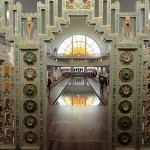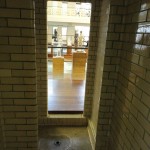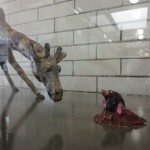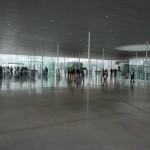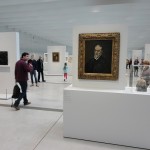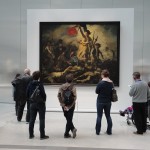The north of France is a lot like the north of England. It’s a bit colder, metropolitan types think it has funny accents and food and it has suffered from a decline in industry, particularly mining. Lille should get itself twinned with Manchester – both cities have great histories and great ambitions for the future (and both are now major student and cultural centres).
While northern France as well as northern England has suffered industrial decline – turns out it wasn’t totally due to Margaret Thatcher – the French are more likely to try to compensate by building a new cultural attraction. Lille has many of its own, such as the Hospice de Comtesse. Two new art galleries in nearby towns show how well these can work… and also how they can misfire.
Roubaix, a tram ride from Lille and part of the same Metropole conurbation, could be twinned with Salford. It used to have many factories, now closed, but seems as ambitious as its neighbour Lille – the map from the tourist information centre represents it as a bigger dot between Lille and Brussels and like Salford, Roubaix has a bright pink logo. It also has a brilliant newish art gallery, La Piscine Roubaix museum of art and industry. As the name suggests, this is an imaginatively restored swimming pool and baths, opened in 1932 so factory workers could clean off and improve their health. Reopened in 2001, the centrepiece is the old pool hall, still with a shallow pool at its centre and two spectacular sunburst windows at its east and west ends. The pool is lined with posing statues, the shower cubicles have become exhibit spaces and its original lion’s-head fountain continues to spray water into the pool.
It would be worth visiting just for the building, but the exhibits are great. It’s a local museum built around local collections, including the fabric samples built up over many decades by the city’s industrialists and the paintings of textile merchant Henri Selosse, donated to the city in a bequest in 1924. M. Selosse had an eye for the ladies – there’s a lot of bodies here, both in paint and sculpture, although that’s a good fit for a former swimming pool – but also a lot of ‘animalia’ (pictures and statues of animals). It turns out that people liked looking at people and creatures, even before the internet.
There are items by some prestigious names at La Piscine such as Picasso, but it works as a collection that fits its building and its city. The café is run by Meert, the grand Lille tearoom which supplied local hero General de Gaulle with waffles during his campaigns. It’s the model of a new art gallery, rooted in Roubaix.
And then there’s Louvre Lens. Lens is a train ride away from Lille, rather than a twin city, and is a former mining town – the new Louvre outpost, opened on 12 December last year, is built on an old pithead. And it doesn’t really work.
The building is new, rather than a conversion. That is not necessarily a problem, but it is when the building looks like an airport terminal, all glass and metal, sealed off from Lens itself on a raw new site. (It seems churlish to criticise the free bus to and from the station, but this adds to the sense of being cut off.)
And then there’s the initial collection. It’s here for just five years, and some items will be rotated before that, and has only 255 pieces, arranged by date in the 120 metre long grand gallery. You enter at the top of a shallow slope, and the sight of all these works of art (mainly paintings, but also statues, Egyptian artefacts and other items) is impressive.
The fact that you can take your own path through them – all are on free-standing plinths rather than the walls – gives the illusion of choice, but the small number of exhibits from across the millennia in the Louvre’s collection means you’re being closely guided (and it means you can miss things quite easily). It all feels a bit patronising: while there’s the ancient Egyptians and some Islamic art, it’s generally Eurocentric and Delacroix’s Liberty leading the people is right against the far wall, effectively the end of history. The free-standing plinths mean it’s easy to be distracted, as when you’re looking at one thing, you can generally see several others behind it. (To add a positive point – it does make the gallery superbly accessible for those in wheelchairs.)
There’s almost no connection between Lens and what is in the collection, while in an interview the director Xavier Dectot says rather patronisingly – at least, it sounds that way in translation – that the museum is doing what it does in Paris, “it’s just that we offer more ‘subtitles’”. Apparently mediators go out to supermarkets and swimming pools to tempt locals to visit. It’s a shame they didn’t visit, and learn the lessons of, the former swimming pool in Roubaix when doing the design. It’s odd, given the original Louvre is drenched in the history of its Parisian location, that this new outpost so lacks it.

